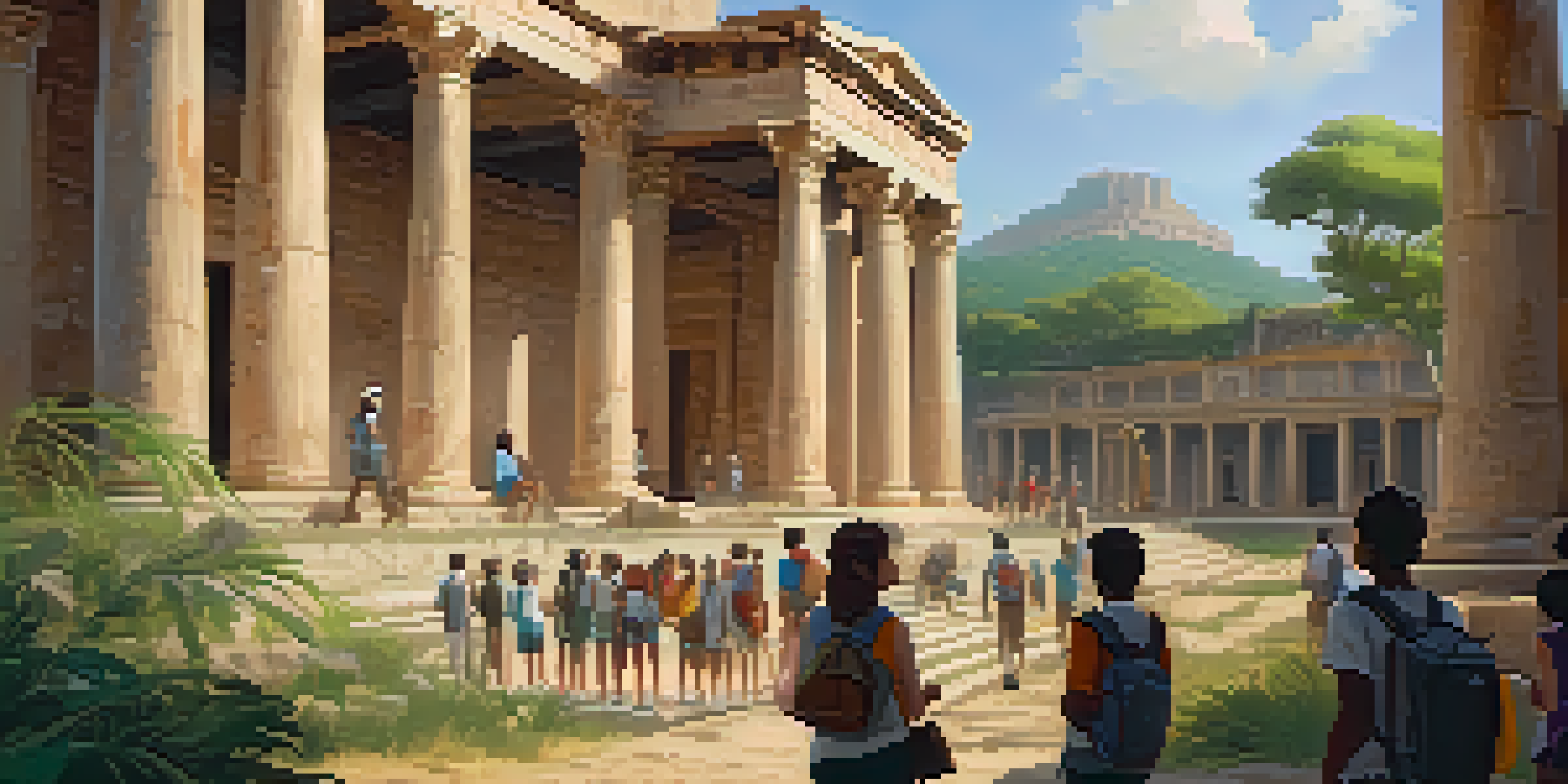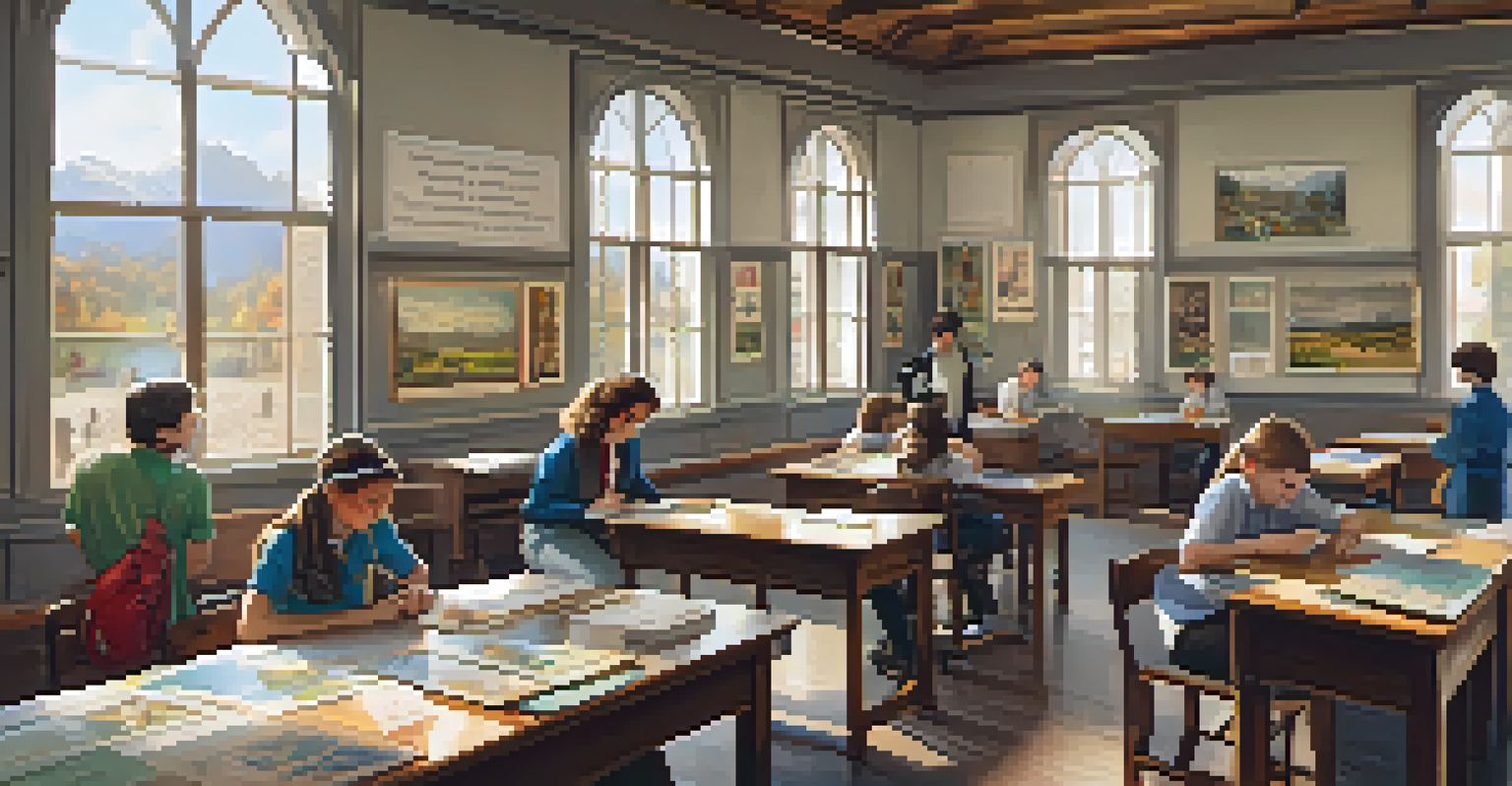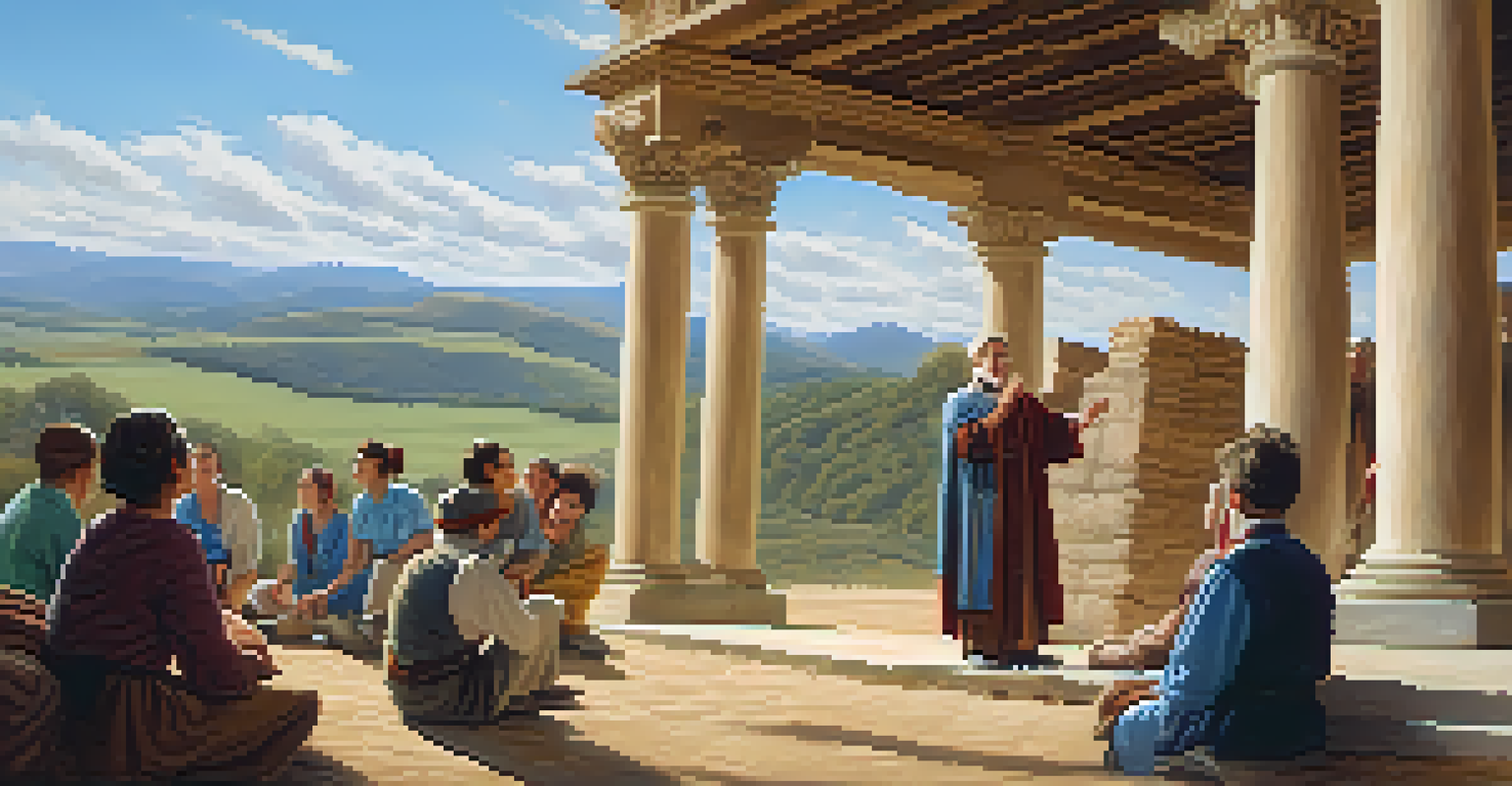The Role of History in Educational Guided Tours

Understanding the Purpose of Educational Guided Tours
Educational guided tours serve as a bridge between theoretical knowledge and real-world experiences. By stepping into historical sites, learners can visualize and contextualize what they've studied in the classroom. This hands-on approach allows students to connect emotionally with history, making it more relatable and memorable.
History is not a burden on the memory but an illumination of the soul.
Furthermore, these tours often cater to diverse learning styles, accommodating visual, auditory, and kinesthetic learners alike. For instance, while some may absorb information through engaging narratives from knowledgeable guides, others might find inspiration in the artifacts and landscapes around them. This multifaceted learning experience enhances retention and understanding.
Ultimately, the aim is to create a rich tapestry of knowledge that students can draw upon in their academic and personal lives. By immersing themselves in history, learners not only gain facts but also develop critical thinking skills and a broader perspective on their own lives.
The Importance of Historical Context in Learning
Historical context provides the backdrop against which events unfold, shaping our understanding of their significance. When students grasp the 'why' and 'how' of historical events, they develop a deeper appreciation for their implications. This context allows learners to engage with history beyond memorization, fostering analytical skills that are applicable in various aspects of life.

For example, visiting a battlefield can transform a textbook lesson into a vivid portrayal of sacrifice and strategy. Students might discuss the motivations behind battles, the impact on communities, and the lessons learned from those tumultuous times. Such discussions encourage critical conversations that build empathy and understanding for different perspectives.
Bridging Theory with Real Experiences
Educational guided tours help students connect theoretical knowledge to real-world contexts, enhancing retention and understanding.
By situating their learning within historical contexts, students can better connect past events to contemporary issues. This connection helps them recognize patterns in history, fostering a sense of continuity and relevance that is crucial for informed citizenship.
Enhancing Engagement Through Storytelling
Storytelling is a powerful tool in educational guided tours, transforming dry facts into compelling narratives. A good guide weaves together anecdotes, personal stories, and historical accounts to paint a vivid picture of the past. This narrative approach not only captivates learners but also helps them remember key details.
Those who cannot remember the past are condemned to repeat it.
For instance, rather than simply stating dates and events, a guide might share a story about a local hero or an everyday person's experience during a significant moment in history. Such stories bring history to life, allowing students to see themselves as part of the ongoing narrative rather than mere spectators.
Moreover, storytelling fosters a sense of community among tour participants. As everyone shares in the experience, they create a collective memory that enhances the learning process and encourages further exploration of the subject matter.
Interactivity: A Key Element in Guided Tours
Interactivity is central to the effectiveness of educational guided tours. Engaging participants through questions, discussions, and hands-on activities encourages them to think critically and actively participate in their learning. This involvement not only enhances understanding but also builds confidence in expressing their thoughts and ideas.
For example, students might be invited to analyze artifacts, debate historical decisions, or role-play pivotal moments in history. These interactive experiences help solidify their understanding and make learning an enjoyable adventure rather than a chore.
Interactivity Boosts Learning Engagement
Interactive elements in guided tours foster critical thinking and collaboration, making the learning process enjoyable and effective.
Furthermore, interactivity fosters collaboration among participants, promoting teamwork and communication skills. As students work together to explore historical narratives, they learn to appreciate diverse viewpoints and develop a sense of camaraderie that enriches the overall experience.
The Role of Technology in Modern Educational Tours
Technology has revolutionized educational guided tours, creating new opportunities for immersive learning experiences. From augmented reality apps that bring historical figures to life to interactive maps that guide students through significant sites, tech tools enhance engagement and understanding. This integration of technology can make history feel more accessible and relevant to today's learners.
For instance, virtual tours allow students unable to travel to participate in historical explorations from their classrooms. They can navigate through ancient ruins or renowned museums, experiencing history firsthand without the logistical challenges of physical travel. This flexibility opens the door for a wider audience to engage with history.
Moreover, technology facilitates personalized learning experiences. Students can delve deeper into topics of interest, accessing additional resources and information that enhance their understanding. This tailored approach ensures that every learner can find their own connection to history.
Building Critical Thinking Skills Through Historical Analysis
Engaging with history during guided tours sharpens critical thinking skills, enabling students to analyze information and draw connections between events. As they discuss historical contexts and narratives, learners are encouraged to question sources, perspectives, and potential biases. This analytical approach fosters a more nuanced understanding of history that extends beyond surface-level facts.
For example, students might explore how different historians interpret the same event in contrasting ways. By examining these differing viewpoints, they learn to appreciate the complexity of history and the importance of context in shaping narratives. This skill set is invaluable, as it promotes thoughtful inquiry and informed decision-making in everyday life.
Technology Enhances Historical Exploration
The integration of technology in educational tours creates immersive experiences, making history more accessible and relevant for learners.
Ultimately, the ability to think critically about historical events empowers students to become active participants in their communities. They gain the tools necessary to engage with contemporary issues, drawing parallels between the past and present as they navigate an ever-changing world.
Fostering a Lifelong Love for History
Educational guided tours can ignite a passion for history that lasts a lifetime. By providing engaging, interactive experiences, students are more likely to develop an appreciation for the past and its relevance to the present. This enthusiasm can lead to further exploration, encouraging learners to seek out additional resources and experiences related to history.
For instance, a student who discovers a love for ancient civilizations on a guided tour might pursue related courses, read books, or even visit historical sites during family vacations. This desire to learn and explore can transform their educational journey, enriching their understanding of the world around them.

Moreover, fostering a love for history contributes to informed citizenship. As students grow into adults who appreciate their heritage and the lessons of the past, they become more engaged and responsible members of society, ready to contribute positively to their communities.